
Thundercats 0 NM Wildstorm J Scott Campbell Covr 1st print Movie Coming! Gilmore
$104.99
Description
Thundercats (2002 2nd Series) #0
Published Oct 2002 by Wildstorm
WRITTEN BY J. SCOTT CAMPBELL AND FORD LYTLE GILMORE
ART AND COVER BY CAMPBELL
Full color, 32 PG
J. Scott Campbell, the artistic powerhouse behind the best-selling DANGER GIRL illustrates and cowrites a special 12-page story in this not-to-be-missed issue! If you’re a fan of the cartoon, or a new reader just discovering their magic, you’ll be ecstatic when you read this tale filled to the absolute brim with pulse-pounding thunderous action. Special bonus features in this #0 issue include character bios and behind-the- scenes production designs!
ThunderCats: How J. Scott Campbell Helped the ’80s Icons Return to Comics
In 2002, WildStorm reintroduced ThunderCats to fans with superstar Gen13 and Danger Girl artist J. Scott Campbell.
ThunderCats was conceived as a mass-merchandised property to compete with the likes of Masters of the Universe, G.I. Joe, and the Transformers, all outrageous successes during the early to mid-1980s. The concept came from Ted Wolf, a World War II veteran and inventor with an interest in toy design. Rankin/Bass Animated Entertainment, best known for enduring Christmas specials like Rudolph the Red-Nosed Reindeer and Frosty the Snowman, produced the syndicated series, while LJN manufactured the action figure line.
The production of ThunderCats was unusual for the time, as the show rarely utilized the era’s animation writers, and saw much of its animation come directly from Japan. (Most syndicated shows of the period were already relying heavily on more economical Korean studios, with only a few episodes being sent to Japan.) The show’s bible was written by Leonard Starr, a legendary cartoonist who penciled the earliest Timely/Marvel Comics titles such as The Sub-Mariner and would go on to revive Little Orphan Annie for a lengthy run in newspapers. Starr was the show’s head writer, scripting the pilot and over twenty episodes.
If for nothing else, ThunderCats is notable as the last popular kids’ property created by men born in the early 1900s. By the 1980s, most of the culture, especially material aimed at kids, was being produced by Baby Boomers. This could explain the earnestness and odd Golden Age energy of the show.
ThunderCats’ introductory episode wastes little time establishing the show’s premise. The audience is introduced to the dying planet Thundera, and a group of cat-like humanoids called the ThunderCats desperate to escape. The cast consists of youngsters Lion-O, WilyKit and WilyKat, adult heroes Cheetara, Panthro, and Cheetara, the wise elder Jaga, and because this is an ’80s cartoon, their adorably irritating pet sidekick, Snarf.
Their escape fleet is assaulted by the villainous Mutants of Plun-Darr, who spare the flagship in hopes of seizing the legendary Sword of Omens, which holds the powerful Eye of Thundera. Damage to the ship forces Jaga to develop a new plan, rerouting their course to a faraway planet known as Third Earth. Jaga volunteers to pilot the ship while the others rest in suspended animation pods. He dies of old age before the clan arrives on Third Earth, but the audience later discovers his spirit remains to offer guidance.
While the other ThunderCats barely aged during their years-long journey, Lion-O’s suspension capsule was damaged, causing him to reach adulthood while asleep. Lion-O, the presumed Lord of the ThunderCats and possessor of the Sword of Omens, awakes, in essence, a child in the body of an adult.
Eventually, the Mutants of Plun-Darr track the ThunderCats to their new home, teaming with a mummified sorcerer named Mumm-Ra to torment the heroes and eternally seek the Eye of Thundera. This is the show’s premise and, to many fans to this day, the classic status quo for ThunderCats stories.
The show is remembered for its visuals as much as its mythology. There wasn’t another show on the air that looked like ThunderCats in 1985, with its meld of science fiction, fantasy, and comic book superheroics. Rankin/Bass hired the Japanese studio Pacific Animation Corporation to animate the series, a studio that was later acquired in 1989 to form Walt Disney Animation Japan. The actual animation quality varies from episode to episode, but the fast-paced opening sequence, with is intricate camerawork and crisp animation, is a classic.
In addition to a unique cast of monstrous villains, cat-like heroes with bodies befitting Greek gods, and quirky side characters, ThunderCats also benefited from a memorable emblem that represented the team. The lion silhouette that adorns the heroes’ uniforms and the mystic Sword of Omens is just as iconic to fans of the era as Batman’s bat emblem.
Years after the show ended its original run, youth culture adopted the ThunderCats’ symbol in the late ’90s. ThunderCats t-shirts, featuring only the heroes’ emblem, were often spotted on MTV, a fashion embraced by hipsters, nerds, and hip-hop artists. By this time, the ThunderCats property happened to be owned by Warner Bros., an entity that’s proven it knows how to merchandise silhouetted animal logos like the Bat-Symbol.
During the initial run of the toy and cartoon, Marvel published a ThunderCats comic under its kid-friendly Star Comics brand. The book actually featured an impressive roster of talent, such as David Michelinie and Jim Mooney (and Gerry Conway, who made his return to Marvel in the book and has cited it as an important step in his career), but didn’t gain the fan following of other licensed books like G. I. Joe and Transformers.
The ThunderCats still held a place in fans’ hearts, however, and were featured in a seminal article in the fanzine Wizard in 2000. The premise had the Wizard staff commissioning popular creators of the day to recreate 1980s favorites. Along with G. I. Joe, Masters of the Universe, and Transformers, the ThunderCats were given a new millennium makeover, courtesy of artist Jim Cheung.
This article inspired a revived interest in 1980s properties, and within two years, the comics market would be flooded with revamps of all the era’s heavy hitters. Wildstorm’s 2002 relaunch of ThunderCats, the first ThunderCats comic in nearly 15 years, was given a noticeable marketing push.
Each issue would have a variant cover, featuring work from the likes of Arthur Adams. And before the initial miniseries, Wildstorm commissioned popular Gen 13 and Danger Girl artist, and ThunderCats fan, J. Scott Campbell to plot and draw a special ThunderCats #0 to reintroduce the public to the franchise.
Co-written by Campbell and Ford Lytle Gilmore, “A Cat’s Tale” was hyped as a ThunderCats refresher, aimed at fans who remembered the show but perhaps weren’t experts on the lore. The story has WilyKat observing Lion-O during a training session in the forest, lamenting that he lacks a cool individual weapon like the other ThunderCats (an element Gilmore acknowledges in the issue’s text piece as one of his favorite aspects of the show.)
To prove his point, WilyKat recollects previous battles from ThunderCats lore, such as Panthro fighting off Jackalman and Monkian with his nunchaku…
Tygra and Cheetara reclaiming the Bracelet of Power from Castle Plun-Darr, with the aid of their bolo whip and bo-staff…
And, finally, Lion-O’s confrontation with Mumm-Ra in his pyramid, where Lion-O uses the Sword of Omens to run the villain through.
Campbell takes great artistic liberties when representing these fights, a fact acknowledged in the script when Lion-O bluntly tells WilyKat none of these battles quite happened that way. Presumably, this was Gilmore’s attempt to smooth over any continuity issues. And, given that the story presents these flashbacks as WilyKat’s interpretations of what happened, this isn’t a real problem.
The story’s final moment is a cutaway scene to Mumm-Ra, resting within his Onyx Pyramid. Spying on their conversation, Mumm-Ra declares he may be able to exploit WilyKat’s impulsive nature someday. It’s all more of a tease than a true story, but it’s enough to excite fans of the original material. During the 2000s, Wildstorm would go on to publish several ThunderCats comics, transitioning away from the optimistic spirit of the show into something far darker as time went on.
Given that J. Scott Campbell wasn’t far away from transitioning to covers and design work in 2002, ThunderCats #0 exists today as one of the last examples of his interior continuity pages. Over the years, it’s become a collector’s item for ’80s cartoon fans and Campbell completists. It’s a fantastic-looking comic, one that ideally should still be in print today.
‘Thundercats’ Movie Revived With ‘Godzilla vs. Kong’ Director Adam Wingard
“Godzilla vs. Kong” director Adam Wingard is attached to helm a computer-animated adaptation of the beloved 1980s Rankin Bass animated series “Thundercats” for Warner Bros., from a script Wingard will write with frequent collaborator Simon Barrett (“You’re Next,” “The Guest”). Dan Lin of Rideback and Roy Lee of Vertigo, who produced Wingard’s film “Death Note,” were already attached to produce the film with a script by David Coggeshall when Wingard signed on, but Wingard and Barrett are starting fresh.
The original series, which aired from 1985 to 1989, was revived for a single season Cartoon Network in 2011, and then again in 2020 under the title “Thundercats Roar.” But as a feature film, “Thundercats” has been a tricky project to crack for the studio, which has hired a small parade of screenwriters and producers since at least 2007 to bring a movie to life. The underlying story is at once relatively simple — a team of humanoid cat-people (or cat-like humans) like Lion-O, Panthro, and Cheetara fight the evil wizard Mumm-Ra on the planet of Third Earth — and surprisingly complicated, with a mix of technological space sci-fi and swords-and-sorcery fantasy. There’s the mystical blade that holds the Eye of Thundera and the Ancient Spirits of Evil, and then antagonistic aliens like the Mutants of Plun-Darr and the Lunataks.
In an interview with Deadline, which first reported the news, Wingard made clear he is not interested in making a “Cats”-style live-action version of “Thundercats,” and wants instead to take a CGI-approach to the visuals that would embrace the “’80s aesthetic” of the original series.
“I don’t want to reinvent the way they look; I want them to look like Thundercats,” Wingard said. “I want to do a movie you’ve never seen before: A hybrid CGI film that has a hyper-real look and somehow bridges the gap between cartoon and CGI. That’s the starting point”.
Near mint, 1st print. Bagged & Boarded.
Related products
-
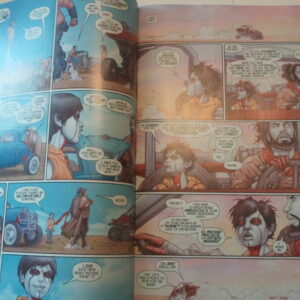

Rai # 1 NM Valiant Dan Abnett Juan Jose Ryp 1st print Cover C (Adam Pollina)
$39.99 Add to cart -
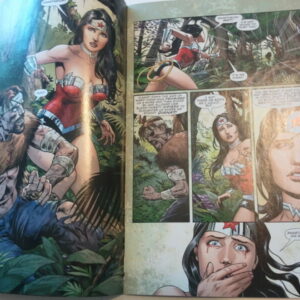

Wonder Woman 47 NM Harley’s Little Black Book Sketch Cover Amanda Connor 1st pr
$64.99 Add to cart -
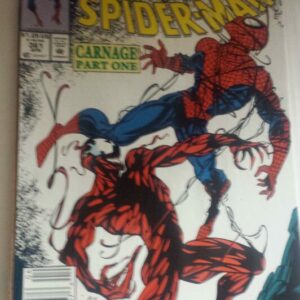
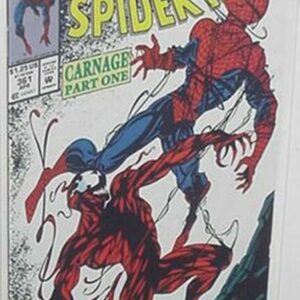
Amazing Spider-Man 361 NM vs Carnage Bagley Venom 2 Let There Be 1st print Movie
$394.99 Add to cart -
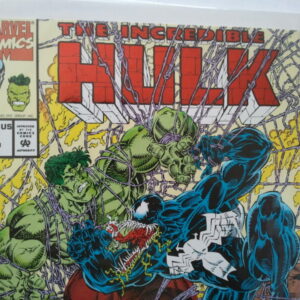
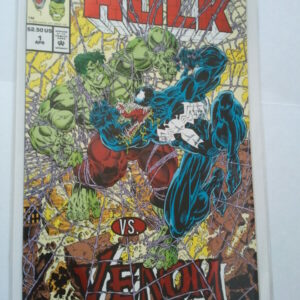
Incredible Hulk vs Venom 1 NM Peter David 1st print
$189.99 Add to cart